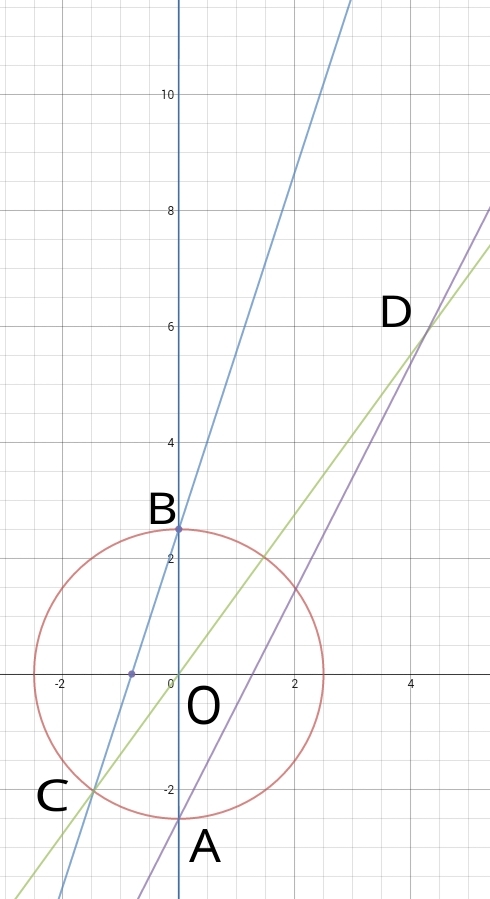A geometry problem by Akshay Yadav

The figure represents above shows a Cartesian plane.
In the given figure O = ( 0 , 0 ) is the center of a circle with radius 2 5 units. ∠ A B C = 1 8 ∘ and ∠ A D C = 9 ∘ .
If the x -coordinates of D are in form
c 2 ( c − c a + a + a c + a + a a c − c a c + c a + a a c + c a ) a ( a − b ) ( 1 + a − a c + c a )
Note that a , b and c are mutually prime positive integers.
Find a + b + c .
You may use the fact that sin 1 8 ∘ = 4 5 − 1 .
Clarification : Angles are measured in degrees.
It is a challenge for all those who love geometry! This is the toughest problem that I have posted on Brilliant till now.
The answer is 10.
This section requires Javascript.
You are seeing this because something didn't load right. We suggest you, (a) try
refreshing the page, (b) enabling javascript if it is disabled on your browser and,
finally, (c)
loading the
non-javascript version of this page
. We're sorry about the hassle.
1 solution
I had never thought that anyone would post a solution to this problem as it is extremely long, your solution is very good and appropriate. +1
Log in to reply
Thanks! I can't imagine how you came up with such a complicated expression. It was fun to solve though!
Log in to reply
Even I don't know how I ended up with that, I was merely playing the expression!😛
Since O is the centre of the circle and B is a point on the circle, we have ∠ A O C = 2 ∠ A B C = 3 6 ∘ .
Since ∠ A O C is an external angle of △ A O D where ∠ A D O = 9 ∘ , then ∠ O A D = 3 6 − 9 = 2 7 ∘ .
Therefore C O D has equation y = x cot ( 3 6 ∘ ) and A D has equation y = x cot ( 2 7 ∘ ) − 2 5 . Since the intersection of these two lines is D , we just need to solve for x : x = 2 ( cot ( 2 7 ) − cot ( 3 6 ) ) 5 Now the hard part is equating this into the complicated form above. I won't post my entire derivation here because it's almost a page long. Here is the final answer: x = 4 ( 2 − 2 5 + 5 + 5 2 + 5 + 5 1 0 + ( 5 − 2 ) 2 ( 5 + 5 ) ) 5 ( 5 − 3 ) ( 1 + 5 − 2 ( 5 + 5 ) )
Therefore we get a + b + c = 5 + 3 + 2 = 1 0 .
For the record, this expression has a much simpler closed form: x = 8 5 1 0 − 2 5 + 1 0 5